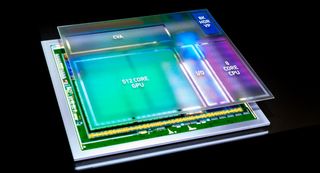Nvidia Partners With Bosch, Paccar On Self-Driving Vehicles

Nvidia announced that it has partnered with Bosch and Paccar to work on self-driving vehicles. The partnership with Bosch is devoted to building "artificial intelligence self-driving systems for mass market cars," while the partnership with Paccar will focus on autonomous semi-tractor trailers. Between the two of them, along with its other self-driving vehicle efforts, Nvidia has positioned itself as a key participant in our driverless future.
Bosch Wants Self-Driving Cars For Everyone
Bosch's system will use the Xavier SoC announced by Nvidia in September 2016. Xavier was made specifically to handle the deep learning functions that self-driving cars rely on to learn the rules of the road, determine if something is a threat, and otherwise keep the people inside and around them safe. Nvidia said that Xavier will feature an 8-core ARM65 CPU and a 512-core Volta GPU and will be based on the 16nm FinFET manufacturing process.
Here's what the company said about Xavier in the announcement of its partnership with Bosch:
The unprecedented level of performance of Xavier is necessary to handle the massive amount of computation required for the tasks self-driving vehicles must perform. These include running deep neural nets to sense surroundings, understanding the 3D environment, localizing themselves on an HD map, predicting the behavior and position of other objects, as well as computing car dynamics and a safe path forward.
It will be interesting to see how Xavier compares to previous iterations of Nvidia's Drive PX systems. We noted when Xavier was announced that the SoC would have about the same level of performance as Nvidia's Drive PX 2. The main difference was that Xavier will require just 25% of the power (20W) as its predecessor. That should make it easier for auto manufacturers to stick the system in a car's dash even though doing so limits heat dissipation.
Nvidia didn't say when it expects Bosch's system to debut in a vehicle, but given the rapid rate at which auto manufacturers are rushing to introduce self-driving cars, it wouldn't be a surprise if a vehicle with the Nvidia-Bosch AI system built in debuts sooner than you might expect. The main question is how autonomous the vehicle will be: Xavier is aimed at Level 4 autonomy, which means a vehicle is fully autonomous, but Bosch might aim lower.
Paccar Makes Life Easier For Truck Drivers
Paccar has a different focus: It wants to make autonomous semi-tractor trailers capable of responding to a variety of situations. Nvidia said in its announcement of the partnership with Paccar that this will "improve driver productivity, enhance transportation efficiency, and increase safety." That won't require Xavier--Paccar will use the Drive PX 2 instead--but it could have a bigger impact on its target audience before Bosch's system does.
Stay on the Cutting Edge
Join the experts who read Tom's Hardware for the inside track on enthusiast PC tech news — and have for over 25 years. We'll send breaking news and in-depth reviews of CPUs, GPUs, AI, maker hardware and more straight to your inbox.
That's partly because Paccar has already built a proof-of-concept truck with Nvidia's technology. It can handle various problems, albeit on a closed course, and the focus on making drivers more productive and safe indicates that a human driver will be there to take the wheel if the system falters. Having those drivers at the ready will also reduce the need for the guidance system to be able to handle any situation that can be thrown at it.
This is part of the reason why companies like Tesla, Uber, and others have focused on autonomous trucks--instead of having to navigate city streets, like they would with consumer-focused vehicles, the trucks will mostly handle the tedium of driving hundreds of miles on the highway before handing control back off to a human driver once it approaches its destination. Despite their size, trucks can be easier to automate than consumer vehicles.
Nvidia Won't Stop There
Bosch and Paccar aren't the only ones turning to Nvidia for their self-driving technology. Tesla also uses the Drive PX 2 in its Autopilot feature, and at CES, automotive parts supplier ZF announced the ProAI system based on Nvidia's tech. The company is basically trying to make sure its hardware and software are used in as many self-driving vehicles as possible. All the partnerships announced so far will doubtless help Nvidia reach that goal.

Nathaniel Mott is a freelance news and features writer for Tom's Hardware US, covering breaking news, security, and the silliest aspects of the tech industry.
-
PA_34 TBH, system errors could be less than human errors like drunk driving, people with focus issues (tunnel vision), sleepy on the road and road rage. Try driving into a city. Me be very inexperience it's very stressful to drive safely. Before you say learn to drive that's the main point. lol Also not many are willing to learn to drive correctly.Reply
Humans aren't prefect drivers either. Humans + computer would change so much. Imagine all the faults I listed could be avoided by a computer. Also this experience based on the USA. Driving isn't fun and exciting when it comes to SF and NY. I'm aware of other countries how they handle drivers education. -
lun471k I'm still waiting for these things to work in the snow. I'd also be curious about how they react to people doing excessive speeding near them (like a motorcycle passing by at 130mph... on the autobahn or something).Reply
Most Popular



